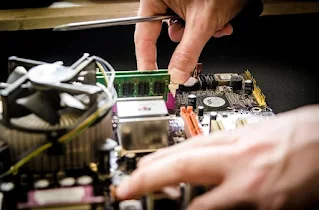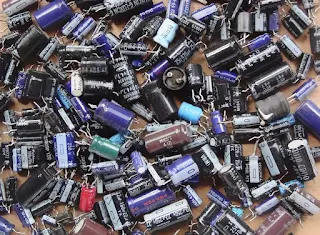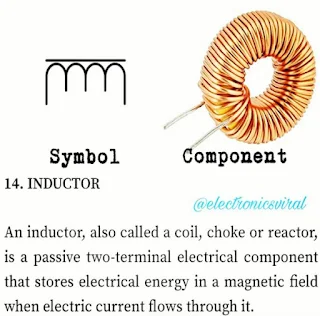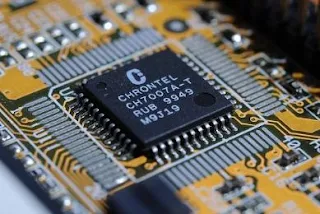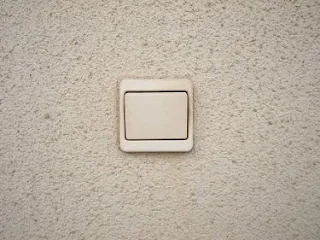Electronic components in the form of tools or objects that are used to support an electronic circuit and allow it to function according to its intended use. Starting with those that are soldered to the circuit board in the form of PCB, CCB, Breadboard, and Veroboard, to those that are not soldered to the circuit board in the form of PCB, CCB, Breadboard, and Veroboard (with other connecting devices, such as cables).
These electronic components are made up of one or more electronic materials, which are made up of one or more material elements, and when put together, they allow the desired circuit design to function according to its function. There are components that regulate current and voltage, level current, insulate current, amplify current signal, and many others.
Electronic components will become more diversified in kind as technology improves, starting with physical shape, derivative types, and features.
The following is a list of electronic components and their inventors:
1. Resistor, (Inventor: Georg Simon Ohm)
According to Ohm's law, the value of voltage versus resistance is directly proportional to the current flowing. Resistors are electronic components with two pins and are designed to regulate electric voltage and current.
With a certain resistance (resistance), they can produce an electric voltage between the two pins. Georg Simon Ohm invented the resistor that we know today. Georg Simon Ohm was a German physicist who made numerous contributions to the realm of electricity.
2. Capacitor, Inventor: Ewald Georg von Kleist
A capacitor, often known as a capacitor, is a device that can store energy in an electric field by accumulating an internal charge imbalance. The Farad unit on the capacitor is named after Michael Faraday. In 1861, Josiah Latimer Clark coined the term "farad" in honor of Michael Faraday, but it was used at the time as a unit of charge quantity.
3. Inductor, Inventor: Michael Faraday
A coil, also known as an inductor, is a passive electronic component that serves as a frequency control, filter, and coupling device (Connector). Inductors or coils are frequently used in electronic equipment or circuits that deal with frequency, such as radio tuners. Henry is the unit of inductance for an inductor (H).
The types of inductors include:
- Inductors whose value is fixed
- Inductors whose values can be set or often referred to as Coil Variables
A passive electronic component (usually in the form of a torus) that may store energy in a magnetic field generated by an electric current passing through it is known as an inductor or reactor. A coil of conducting wire is typically used as an inductor.
Due to the inductor's capacity to process alternating current, inductors are one of the most basic electrical components utilized in circuits with varying currents and voltages.
After Faraday, Joseph Henry also discovered inductance independent of Michael Faraday, although Faraday was the first to publish his findings.
Henry developed the electromagnet into a practical device. He invented the first electric bell (specifically a bell that could be rung at a distance via an electric wire, 1831) and the electric relay/relay (1835). In honor of his services, scientists confirmed his name, Henry, as an international unit (SI).
4. Diodes, Inventors: Frederick Guthrie and Karl Ferdinand Braun
Although crystal (semiconductor) diodes were popularized before thermionic diodes, thermionic diodes and crystal diodes were developed separately at the same time. The working principle of the thermionic diode was discovered by Frederick Guthrie in 1873. While the working principle of a crystal diode was discovered in 1874 by a German researcher, Karl Ferdinand Braun.
At the time of the invention, such devices were known as rectifiers. In 1919, William Henry Eccles introduced the term diode which comes from di meaning two, and ode (from ) meaning "path".
5. Transistor, Inventors: John Bardeen, Walter Brattain, and William Shockley
It turns out that this electronic component was discovered by three scientists / researchers in 1947, the three scientists were John Bardeen, Walter Brattain, and William Shockley. Bardeen (Ph.D.
in mathematics and physics from Princeton University) is a specialist in the electron-conducting properties of semiconductors. Brattain (Ph.D., expert in the atomic structure of solids at the surface and physics of solids). Shockley (Ph.D., leader of transistor research at Bell Labs).
6. IC (Integrated Circuit), Inventor: Jack Kilby)
An integrated circuit (English: integrated circuit or IC) is a basic component consisting of resistors, transistors and others. IC is a component that is used as the brain of electronic equipment. On 10 December 2000 Jack Kilby was awarded the Nobel Prize in Physics in Stockholm, Sweden as the first person to discover the combined circuit. The other half of the prize went to Zhores Alferov and Herbert Krömer.
7. Switch (Switch)
A switch is a device used to disconnect the power grid, or to connect it. So the switch is basically a means of connecting or breaking electricity. In addition to strong current electrical networks, small switches are also used for weak current electronic components.
In simple terms, a switch consists of two metal blades attached to a circuit, and can be connected or separated according to the on or off state in the circuit. The connection contact material is generally chosen to be corrosion resistant. If the metal used is made of ordinary oxide, the switch will often not work.
To reduce the effect of this corrosion, at least the metal contacts must be plated with anti-corrosion and anti-rust metal. Basically the button switch can be applied to mechanical sensors, because this tool can be used in microcontrollers for controlling circuit settings.

